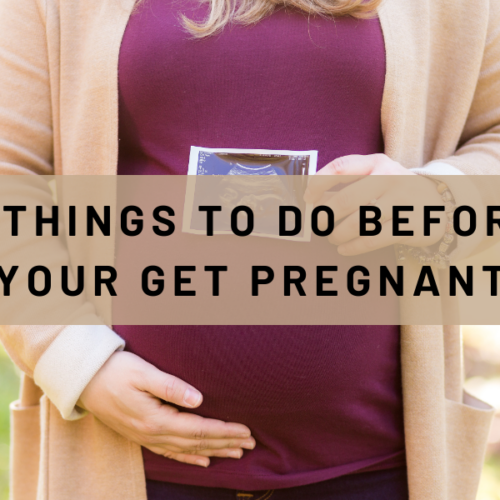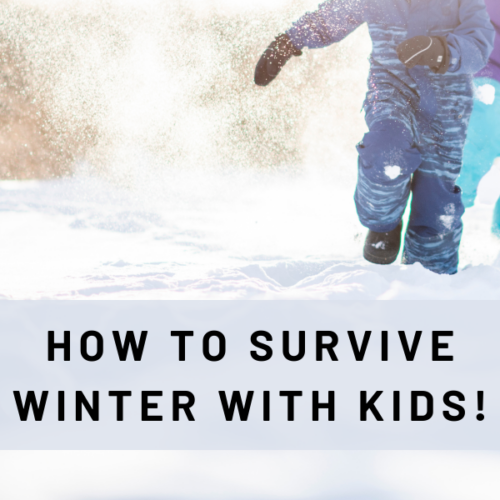When we started homeschooling this fall, I thought our science would look like baking, reading books, watching some documentaries, and taking trips to the zoo. We fall into the unschooling category when it comes to science and social studies. We let the learning ebb and flow as it wants, and I add it in where I can. But the good Lord had different plans for me. If you have been around for a while, you should know my kids are absolutely feral, and when we found a really fun nature club to join, it was almost immediate my kids wanted to start learning about the nature around them. So here we are on a Friday afternoon wading in our local pond looking for critters! This homeschool science lesson was so much fun! The whole family enjoyed it! So here is a short guide on how to go pond dipping!
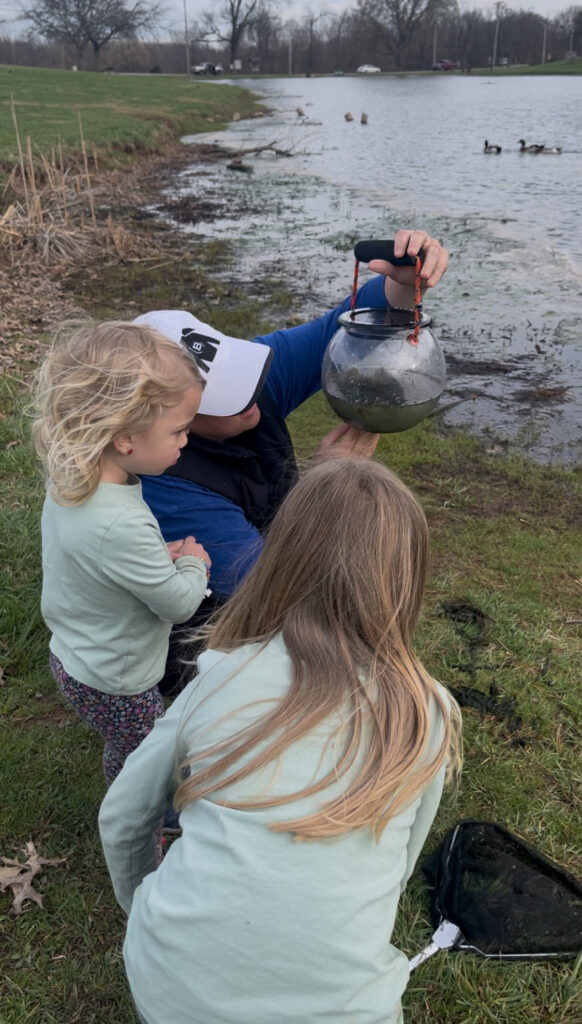
What is Pond Dipping?
Pond dipping, in the simplest terms, is taking samples from a pond, and taking notes of what you find in the samples. You use a net to try to catch small fish, critters, and other things. You count the things you find and then copy down what you found in a reference book to look back on. Ultimately, you want to try to pond dip multiple times, so you can compare your numbers. You will also want to pond dip in the same pond every time.
Our goal for pond dipping is to pond dip 4 times, once each season. We are using a pond at our local park that is open to fishing. If that is all we can accomplish then we are happy! But, we are also hoping to pond dip 4 times at a pond a friend owns so we can compare them! We also want to dip our creek on the property. With all of this information we are hoping to record what we find and hopefully track some trends in what we find.

Supplies you will need
The supplies you will NEED are pretty basic: a net and a bucket. But I recommend “investing” a bit in the net. You don’t want something flimsy, because ultimately it will break, and you also don’t want something with big holes. You want a fine mesh net, so all the critters stay in when you catch them. You also want a bucket that is clear, so you can see from all sides. This could be a clear storage tote, but we love our catch and release bucket! I also recommend some boots. You have to get in the water, and since we want to do this at different seasons in the year, we want to make sure we have dry feet. But you could also pond dip in warm weather and not have this problem! Lastly, a notebook and colored pencils help you record your information. What you use here will vary based on the age of your kids. If you have older kids a lined notebook will be just fine. If you have younger kids a blank notebook so they can draw would be great! If you have high school kids a camera and a laptop might be best!
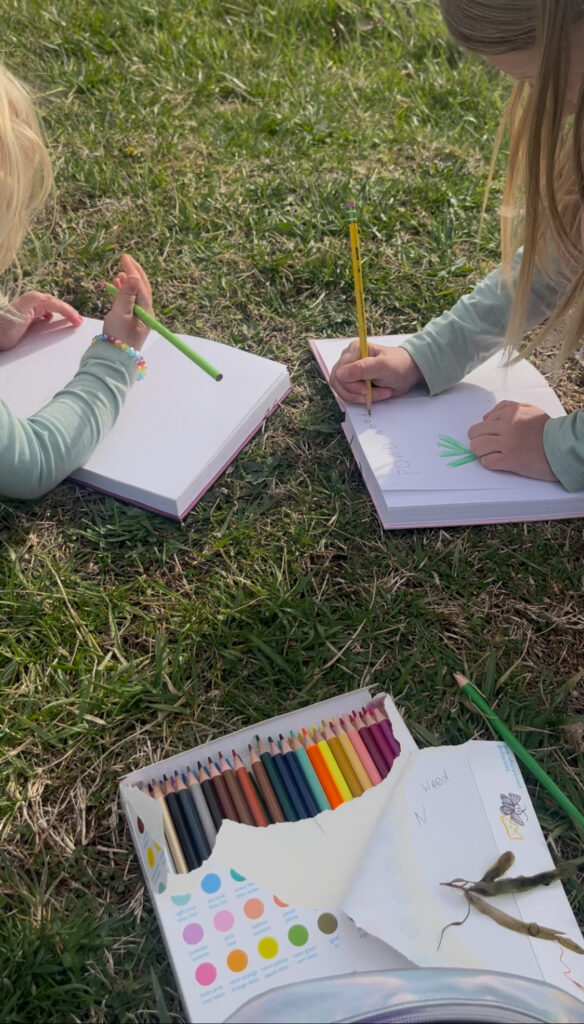
Okay, Break it down for me? What am I doing?
Remember, you can’t mess this up. There is no right or wrong way to pond dip. Take your net, and scoop stuff out of the pond. That’s it. We got most of our stuff from around the edge of the pond. We also got some good stuff when we dug into the silt/dirt on the bottom of the pond. Think of your net as a shovel! We would then sit it on the ground and look for anything moving and try to transfer it into the bucket. Then we would all draw and label what we caught. We used google to identify the things we had never seen before, and we plan to find a good reference book from our area to look up the things we weren’t sure of. You can also email your local extension office to help identify creatures too!
But in the simplest of terms, scoop stuff out of the pond look for life, make a note of what you found and repeat. This is also a good time to talk to your kids about how to care for the things we catch. We don’t kill anything. We try not to harm anything and we treat things kindly. I will remind my kids, ” We are in this creature’s space. We need to respect them and treat them kindly.” I will also remind my kids, that while some of these things may be new to us nothing is scary, but we do need to be mindful of what is around us. As the year goes on make sure you are aware of what is in your area that could be poisonous or dangerous.

What should we track?
Here are the things we are track when we pond dip:
- Date, Time, & Location
- Temperature, Weather Conditions, the smell & What the temp of the water feels like
- What we think we will catch (Hypothesis)
- What we actually caught, the name, color, and how many we caught.
- What the plant life around the pond looks like.
- What the animal life around the pond looks like (Ducks, birds, etc)
- How many different things we caugth
- Anything special that happened (example: We saw banded ducks!)
- Pictures of everything
- What we thought was the coolest things we found
- A Recap, and what we thought about the experience, reasoning about why we think we go the results we did.
You can track some of this or all of it. We are hoping to create a presentation of all the things we found and present it to our friends and family. We are going to track this information along with some other really cool science activities and compile it all for a big presentation at the end of the year. My girls will love creating a cool science fair type experiment.
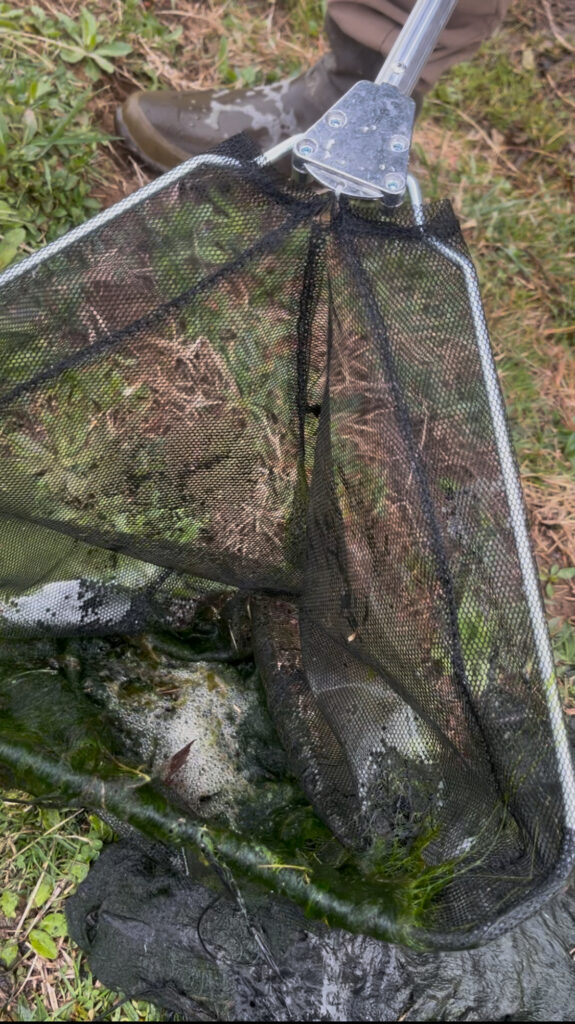
My girls LOVED this experiment. They would have stayed out there for hours, and have already asked to go back. They were engaged the whole time and just totally in love with the project itself. I can’t wait to go back again, and to try out a few new ponds. This is something they would do monthly if we had the time. I highly recommend it to any parent who needs a refresh for their science projects.
If you liked this idea please pin it to Pinterest so you can come back and find it!

